From the CEO
My last task for 2022 is a final reflection on the year that was.
It’s hard to imagine a more extraordinary year for shocks and viscerally experiencing the reality of the transformation of Australia’s energy system.
It is only a year ago that I gave the keynote speech for the second day of the State of the Energy Research Conference 2021.
In many ways it feels like a lifetime ago. Since then, we’ve had the global impacts of the Russian invasion of the Ukraine in February and all that has followed, as well as the election of the Albanese Government in May.
That day, on 8 December 2021, I said the following:
For those of us in the energy system, net zero will mean a transition to a 100% renewable grid and a huge push towards the electrification of everything. But achieving these goals will not constitute – on its own – a successful transition.
It’s not just whether we get to net zero that matters, it is also how we get to net zero that is important to households, small businesses and large commercial industrial users for whom electricity is essential.
Electricity remains expensive and the energy divide between households is widening. Consumers expect a better future, in which energy is not only clean but is also abundant and affordable, including for those experiencing vulnerability and hardship. It is also a future in which their values – including agency and fairness – are respected and where there is reciprocity, so that industry, government and consumers all play their part in the transition.
To go far we need to go together. And we need to arrive together too.
This has been the meta framing for every policy and reform process that Energy Consumers Australia has contributed to this year. In response to each turn of events, we have focused completely on the experiences and expectations of households and small businesses.
This year we have experienced a sense of shock as the reality of managing the transformation from a carbon-based energy system to a renewable system hit home. For much of 2022, we were undoubtedly badly buffeted by global forces, and in particular the rapid escalation in coal and gas prices due to actions by Russia. In June 2022, the Australian Energy Market Operator was forced to suspend the market and blackouts were narrowly avoided. And by Spring, new records were being set for minimum demand, or as we prefer to describe it, maximum solar generation, which also created challenges in keeping the lights on.
If it hadn’t been evident before these events, they reinforced the necessity for a coherent framework in which governments could act to make system design changes to meet both immediate and longer-term challenges to maintain system security. By mid-year, Energy Ministers had committed to a National Energy Transformation Partnership. They have since met four times, which, in early December, culminated in the agreement to the Capacity Investment Scheme. There is more work still to be done.
In that sense, it could be said that 2022 was “the end of the beginning”.
It was also mid-year that price shocks began again. This impacted a number of East Coast jurisdictions, coming on top of retail electricity and gas prices that have remained high for at least a decade. We saw the effect of this in sharply declining consumer confidence. In our Energy Consumer Sentiment Survey research, only 35% of households said they are confident the market is working in their interests, down by 11% in the past year. There was a similar fall in small business confidence from 50% to 43% over the past year. The last time confidence was this low was in 2019, before default offers for electricity were introduced.
Declining confidence is doubly damaging because we are undergoing an energy transition to net zero in which consumers are the heroes. They are expected to participate more and more, as generators and storers of electricity in their homes, by electrifying their appliances and vehicles, and changing some electricity use to different times of the day. All of this requires them to trust that the system has their interests at heart and to believe that the future will deliver better outcomes.
Our survey results also show a widening energy divide amongst households, with those below median household income paying between 3.2% and 12.4% of their income on electricity bills – compared with 2% or less above median income. That is why it is critical that the $3 billion of direct bill relief in the Energy Price Relief Plan is delivered to both households and small businesses to partly offset the anticipated further increases in electricity and gas prices in 2023-24.
If 2022 was the year that focused on longer term “supply side” reforms, then 2023 is the year we hope that empowering consumers has an equal, if not greater, focus. How? By realising the benefits of investment in technology, improving the energy performance of their homes, electrifying heating and transport, and through adaptive behaviour change. This will be the basis for our future submission to the National Energy Performance Strategy. We are also working with the ACT Government on a national information initiative, with the next steps to be considered by Energy Ministers.
I want to thank all of our colleagues across the sector for their support and collaboration during the year, as well as thank my dedicated and committed Board and staff for their inspiration and achievements.
I wish you all the best for the summer holidays.
See you in the New Year.

Lynne Gallagher
Chief Executive Officer
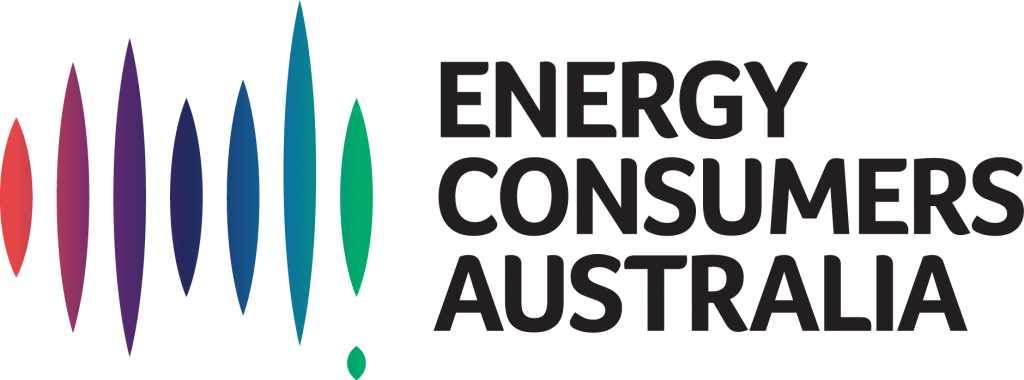
Foresighting Forum
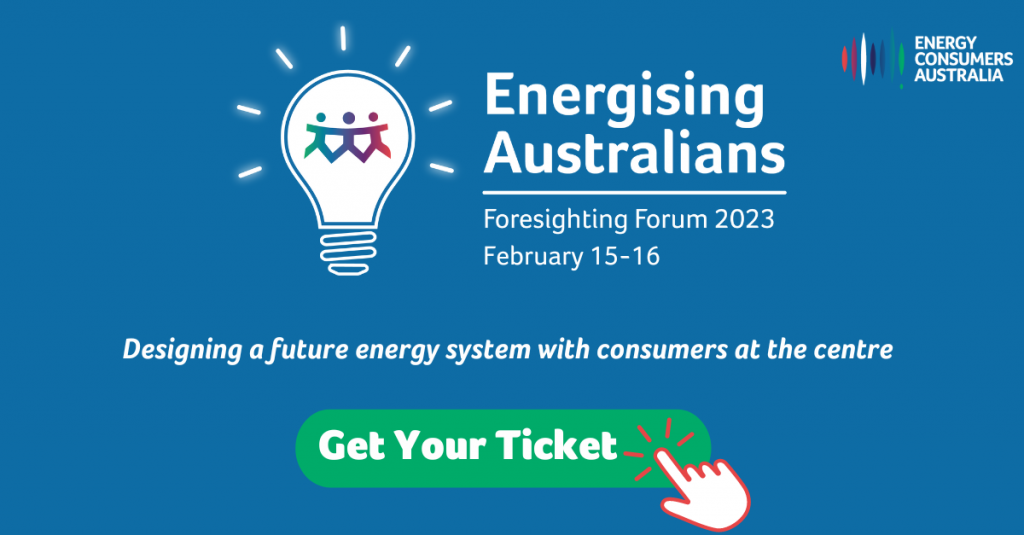
Our Foresighting Forum is fast approaching and we want you to join us. This is your chance to have your thinking about the future of our energy system stretched, clarify new ideas and projects for the year ahead, and create new connections and collaborations – all while considering how we can recentre our thinking firmly on the consumer.
Dates: 15-16 February 2023
Location: Aerial UTS Function Centre, Sydney
Theme: Energising Australians
Cost: $985

In addition to three excellent international keynotes, we have put together a packed program with a range of interactive panels. We will begin the Forum by understanding consumers’ experiences with the market as it stands before moving on to understand their expectations and hopes for a future system. The energy system is not the only system to have ever undergone monumental change. We’ll then reflect on the challenges and opportunities this change can offer, with cross-sectoral learnings to demonstrate that it’s possible to not just survive but thrive in the most turbulent of conditions.
Day two will commence with us considering how we can work together to integrate the energy system and everyday consumers so that everybody benefits. Finally, we will think about how we can design the system in a way that unlocks the full potential benefits of consumer participation. Read the full program here.
Energy Consumer Sentiment Survey
Key Findings
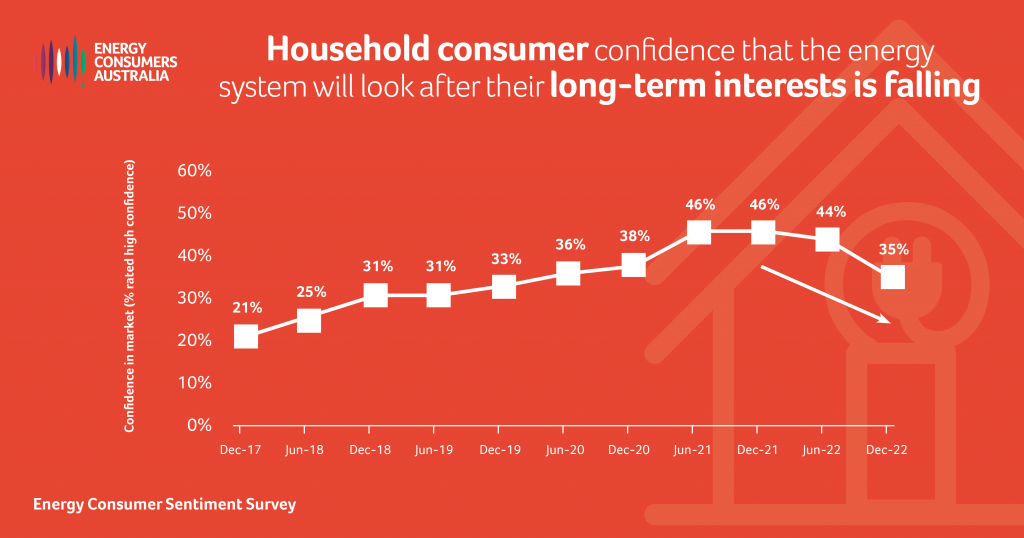
For seven years, our ECSS has been tracking what Australian household and small business consumers think and feel about energy issues.
The results of the December survey reveal that against a backdrop of double-digit energy price increases, there is growing consumer dissatisfaction with the market. Australians are also very concerned about value for money as affordability concerns bite. This has contributed to an increasing sense that the market is no longer working in their best interests, with only 35% of Australians having confidence that the overall energy market is working in their long term interests – an 11% drop compared to the same time last year.
Check out the ECSS in full to discover more about these issues or find out answers to questions such as how much do Australians trust their retailer? How worried are people about the affordability of energy? And how many households have switched retailers or energy plans?
In the Media
Read more about the ECSS findings by catching up on some of the media coverage the survey has received. Find out how the gulf between rich and poor households expands as energy costs accelerate in the ABC, how discount energy deals are disappearing in the Sydney Morning Herald, and how confidence is shrinking in The Canberra Times or the New Daily.
Small Business Retail Tariff Tracker
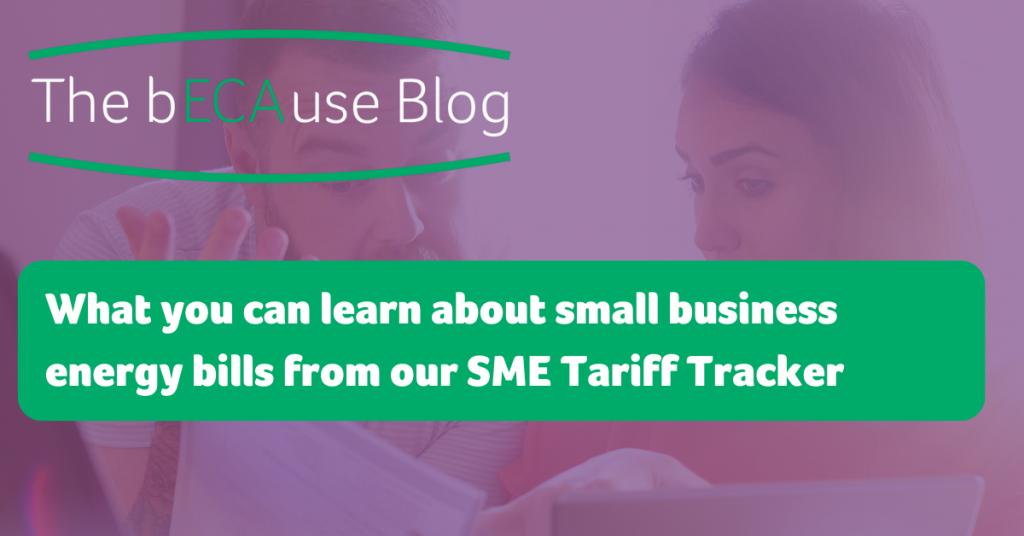
Our SME Retail Tariff Tracker is out now. It builds an evidence base of the costs facing small businesses and makes this information available to decision makers so that they have a clearer understanding of the challenges being faced by small business consumers. The Tariff Tracker makes it easy to track changes in energy bills for small businesses at both a national and state level.
To take a deep dive into the latest results and to understand what they mean, read our expert analysis of the drivers and impacts of rising energy prices for small businesses.
From the Grants Team
Supporting Queensland Farmers

Currently, many Queensland farmers are charged for energy using tariffs created with little consideration of their circumstances.
The Agricultural Energy Tariffs Project is a collaboration between the University of Queensland and Queensland Farmers’ Federation, funded by the ECA Grants Program, that wants to solve this problem. It investigated how farmers are using electricity, when they change tariffs, and how the current tariff structure suits their operations.
Your Chance to Receive Grants Funding

Do you have an idea for an advocacy or research project that can help benefit energy consumers? Are you passionate about improving energy inclusion and equity? Our next round of Influence Grants is now open. Our team can help you develop a concept and provide guidance on topics that align with ECA’s strategic interests.
bECAuse Blogs
Retail Pricing Reform
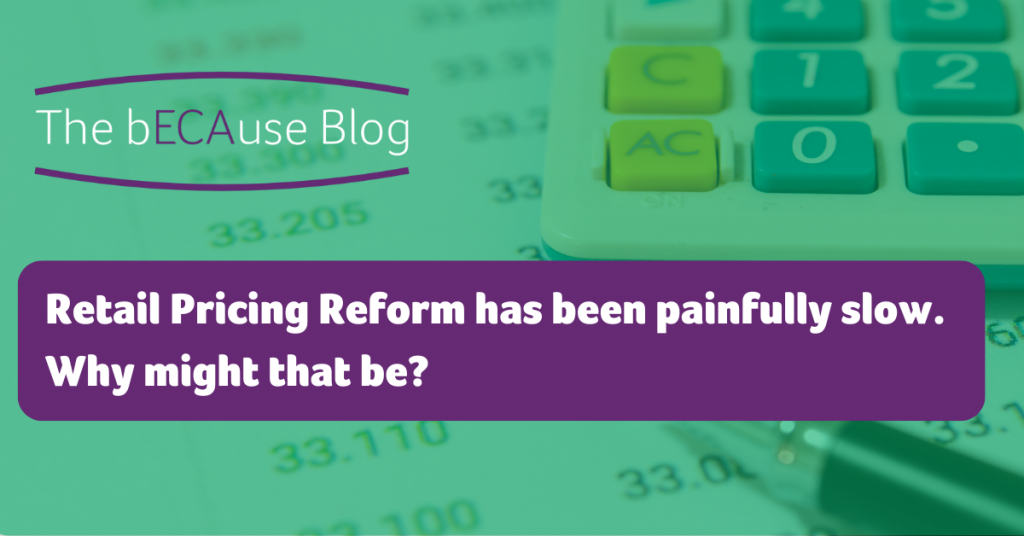
Across many parts of Australia, solar generation has soared, resulting in an influx of energy during the day. However, this is currently not being reflected in how consumers are paying for electricity. Working with Ecoanalytics, we interviewed pricing specialists at retailers and networks to understand why retail pricing reform has been so slow.
Consumer Bill Preferences
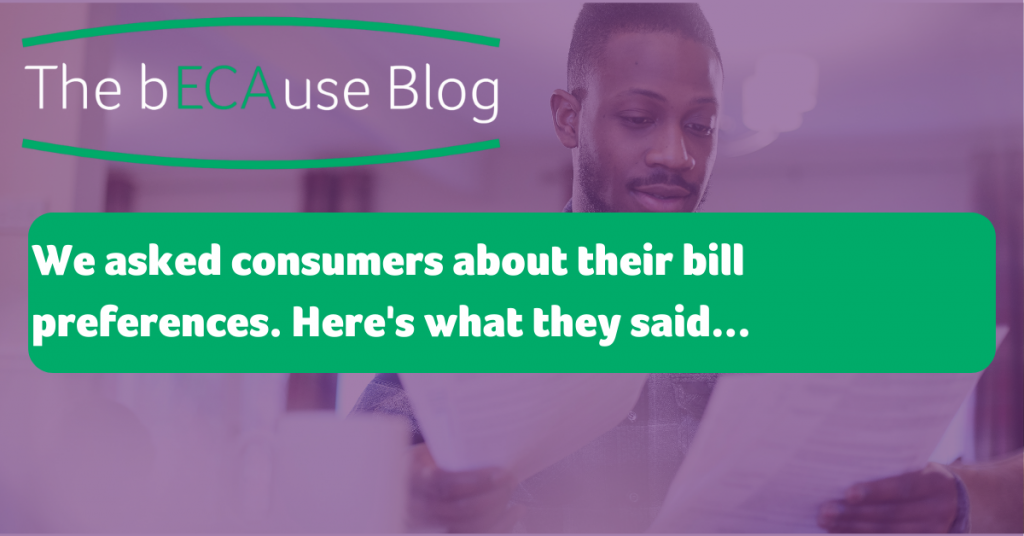
With energy prices skyrocketing, there’s been a lot of talk about the need to reform energy bills. But to this, we need to understand what consumers want and what would be most beneficial to them. Our research provides important insights into how consumers view electricity bills.
Energy Efficient Homes Roundtable
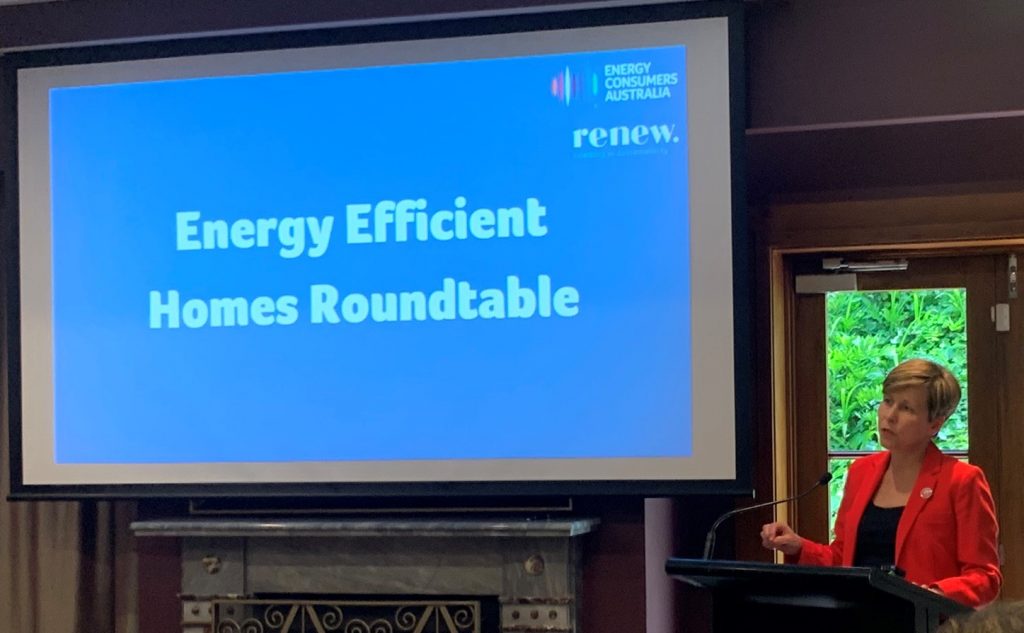
Alongside Renew, we recently released a new report into the attitudes of Australian homeowners, renters and landlords towards energy efficient housing. We were fortunate to have Senator Jenny McAllister, Assistant Minister for Climate Change and Energy, launch the report at our Energy Efficient Homes Roundtable.
If you were unable to attend the event, you can catch up by watching a recording of the full event here. You can also watch a recap of the highlights, including hearing directly from participants about what they see as the barriers and solutions to tackling energy efficiency in homes.
Submissions
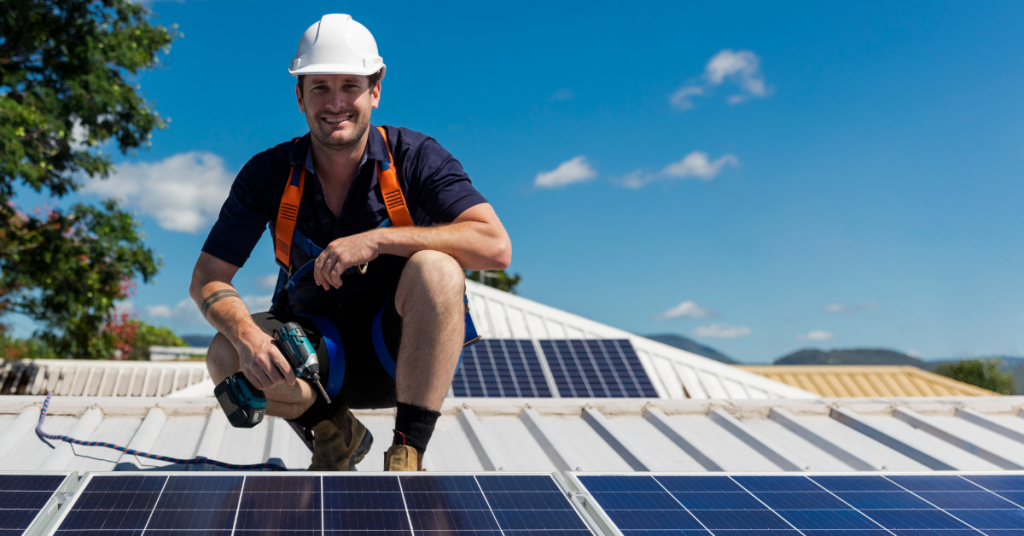
In an increasingly-complex energy system under transition, it is crucial that consumers are adequately protected, especially as the ways they interact with the system are changing. However, we believe that the current regulatory framework is not fit for purpose and leaves consumers at risk. We provided a series of recommendations to Victoria’s Department of Environment, Land, Water and Planning (DELWP) which is exploring the need for additional consumer protections, particularly in the context of consumer energy resources.
Other submissions that we have recently commented on include three to the AER on flexible export limit implementation, the Default Market Offer prices 2023-24, and the connection charge guidelines review. We also submitted a submission to the ESB and AEMC on interoperability directions and CER technical standards.
Board Communique

The Board met in November in Adelaide and were fortunate to visit AGL’s Torrens Island Power Station and the South Australian Power Networks’ Innovation Centre.
Our Annual General Meeting was also conducted at this time and our Annual Report was presented to the Board.


